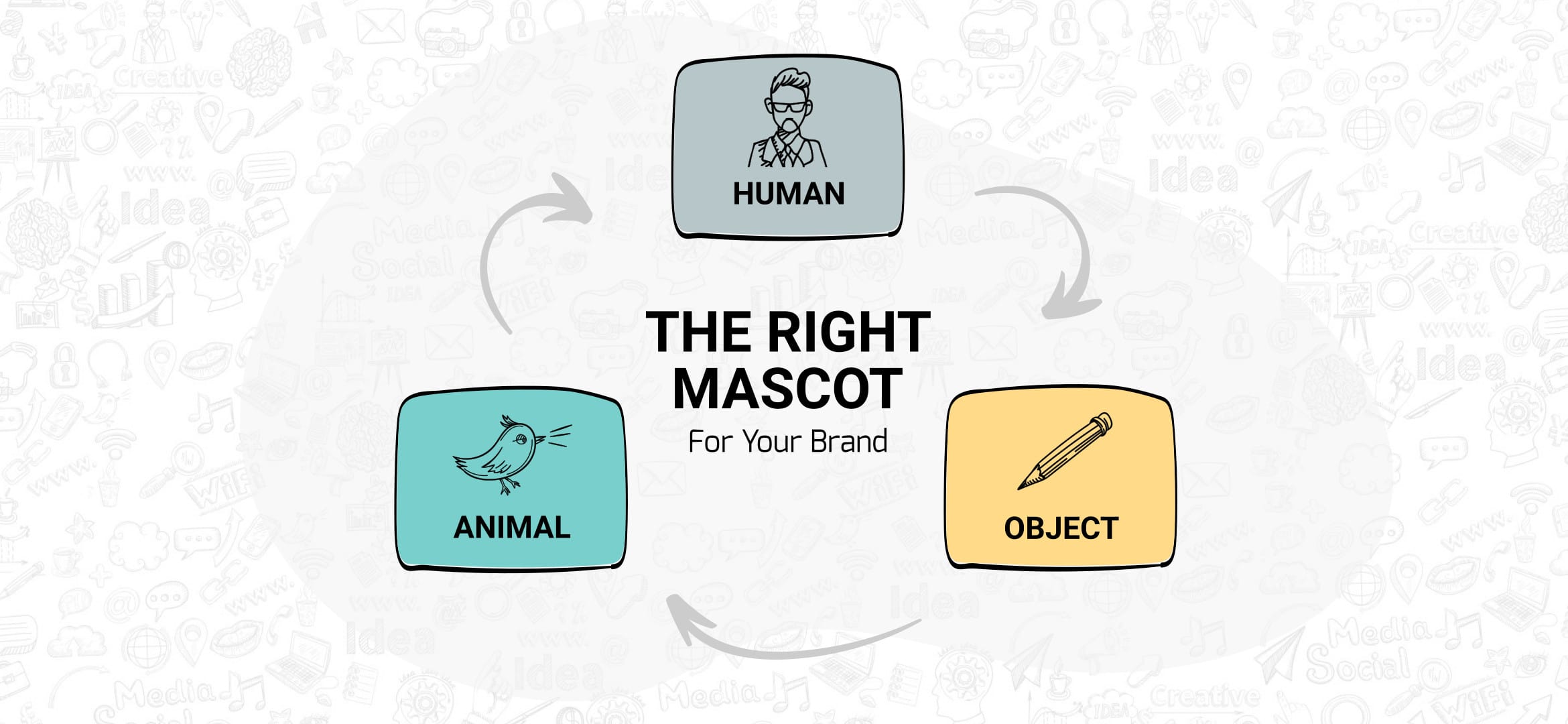Why You Should Create A Brand Mascot For Your Business
The faces of Colonel Sanders from the KFC logo, Ronald McDonald the clown from McDonald’s or even the Quaker Man from Quaker Oats are all as unforgettable as the brands themselves.
That is the impact a well-designed mascot has on a brand. Designed right, a mascot can help your business reach new heights. It also makes your brand instantly recognizable.
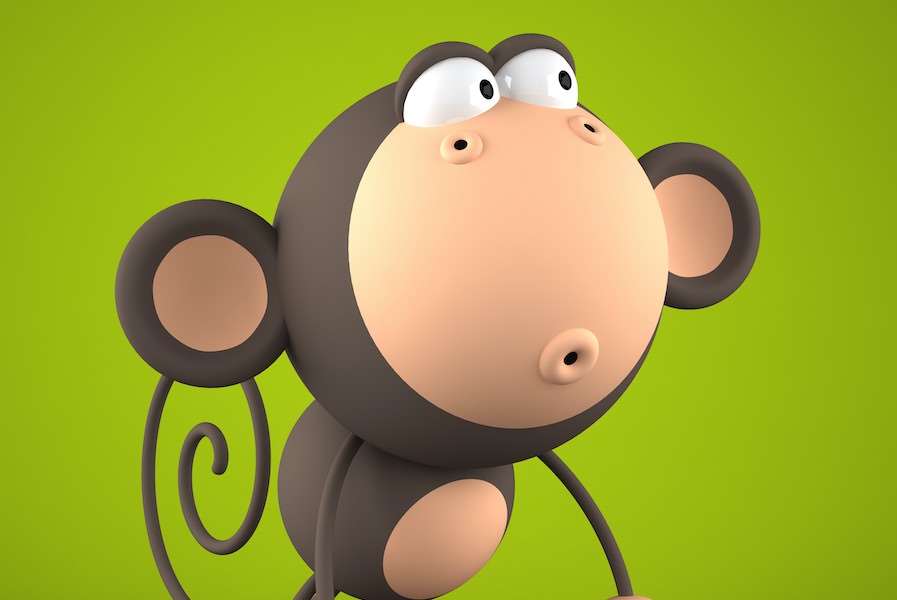
“Mascotte” is the French word for lucky charm and that explains the importance given to a mascot especially in sports. The use of mascots in brand marketing is also not a new concept. The Quaker Man is more than 140 years old! So, if you are planning to use a mascot for your brand, there are so many places to look for inspiration or even to analyze the impact of mascots to really understand whether you need one.

The Moving Picture Company (MPC) conducted research on “effectiveness of advertising with characters”. Based on their study, brands that use mascots or special characters in their campaigns observe nearly 41% increase in their profits. The improved emotional connection they make with their audiences is one main reason for this improvement.
After all, everyone loves a subtle human touch without which the brand would be just
another name that is easily forgotten.
In this blog, we’ll go through why that is and how you can get started. Throughout the blog, we’ll also give you examples of mascots that are well known, so that you get some inspiration.
To start with, what is a brand mascot?
Essentially, a brand mascot is a humanized character that represents, and reinforces, a brand’s personality in its marketing.
Some of the most common mascots are derived from objects, animals, people, and even fictional characters or creatures. These talismans can have a big range of applications such as being used in logos, icons, websites, souvenirs, and even in mobile apps. They can amplify your advertising and offer you new brand engagement and awareness opportunities.
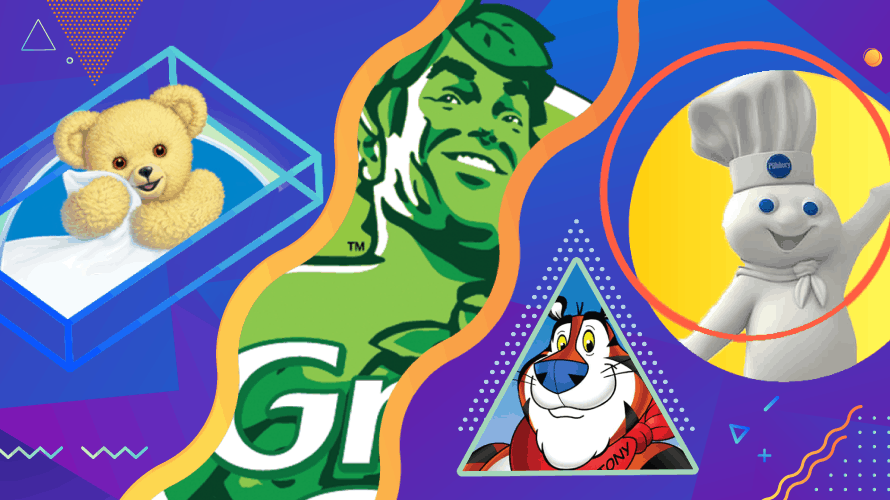
How to decide whether you need a brand mascot
Before jumping right into deciding on the kind of mascot that you should pick, let’s first consider whether you need one. Below are a few of the common reasons why a brand may choose to create a brand mascot.
Here are some of the perks of using a mascot in your brand’s marketing:
- Mascots help convey the type of services you offer, without using words. And when you manage to build this rapport with your audience, it shows in the growth of your business. If the mascot gains traction you are left with a valuable brand asset to incorporate in your marketing campaigns.
- That also brings us to the next advantage of using mascots – competitive edge in an ever growing industry. Imagine there are five different cleaning service companies in your city. There is one that has a cute little mascot next to its name, on the pamphlets it offers for advertising its services and other places. You are most likely to remember this service even though it might not be a huge brand. So, whatever be the size of your target audience, you end up showcasing how unique your business is, by integrating a brand mascot.
- Mascots make your brand timeless. Mascots create an impact on people of all age groups. In fact, some brands that no longer exist are still remembered partly because of the iconic mascots they had.
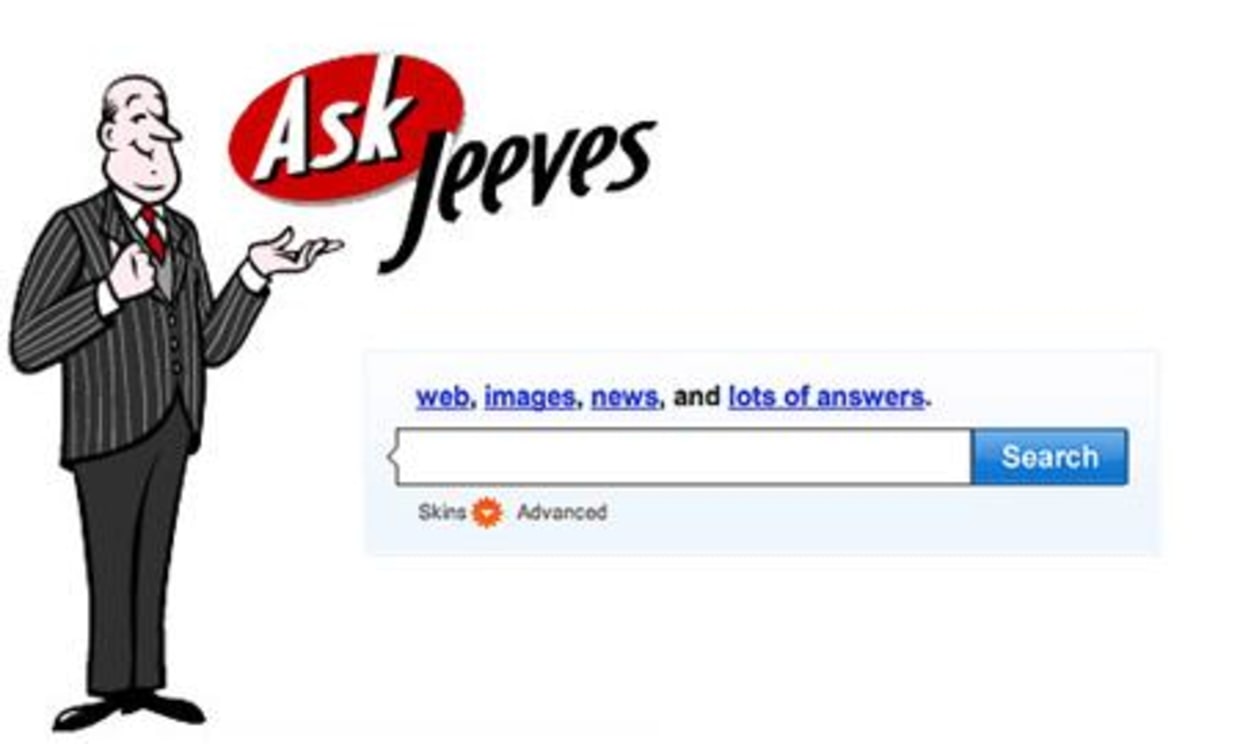
Nearly 25 years ago, Jeeves the butler, was the first person most internet users thought of when they had to find an answer. Today Ask.com has changed in so many ways but many still remember the popular mascot they once had.
With all that being said, remember that mascots can make or break your brand image. This is why you should be very careful about how you choose your mascot and the kind of meaning it conveys.
What are the types of brand mascots that you can choose from?
Mascots are all humanized versions of different types of things or beings. Though these are different for different brands, you will mostly come across fictional human characters, animals or objects relevant to the services or products a brand offers.

1) Human Characters
The whole concept of using a mascot is to add a human touch to make designs more interactive and relatable. So some brands find using human characters to be an easy choice for mascot designs.
Rich Uncle Pennybags pretty much sums up what Monopoly is all about. KFC, McDonald’s, and Uncle Ben’s are a few brands that used or still use human characters as their mascots. These might or might not have any semblance of people in real life. Some add a little drama by giving their mascots a fictional touch or even a superhero makeover to emphasise the strengths of their business. Mascots of Mr. Muscle and B&G Foods are the perfect examples of this.
2) Humanized Animals
If you look at family-focused consumer brands or even brands targeting kids, you might notice humanized versions of animals being used as mascots. These are characters that are easy to animate and the brands might also use them in their TV advertisements or video marketing seamlessly.
Coco the Monkey of Coco Pops and Chester Cheetah are characters that kids won’t easily forget.

3) Humanized Products
Finally, if you wish to convey the message bang on, then simply humanizing the product you offer would be the easiest way to do it. In a myriad of candies and sweet treats for kids, how do you say that your brand sells colored button-shaped candies? Simply humanize them! M&M’s mascot is a great example of humanizing objects to convey your brand’s offerings.
Kimp Tip: Go through different concepts with your designer. After the concepts have been short-listed, start working with your designer to sketch out some ideas. This will allow both you and your designer to put your minds together on what needs fine-tuning. Especially as you consider whether your mascot will or won’t work in different placements.
Worried designing a brand mascot will be an expensive affair? With a Kimp Graphics subscription you get an unlimited graphic design service (including illustrations!) + revisions for a flat fee! That means that with Kimp’s graphic design services you can explore all of your ideas without breaking the bank!
What should you consider when you develop your brand mascot?
You now know what a mascot is and the different types of mascots that you can choose from. But how can you develop your brand mascot? What factors should you pay attention to? Here are some ideas to keep in mind.
Consider the type of audience
A human character like Jeeves from Ask.com might not mean anything to a kid but Chester the Cheetah of Cheetos would definitely be appealing. Though mascots work well with all types of audiences, the type of mascot you choose and the color schemes and other elements depend on the audience you are targeting.
Personalization
Even if you have the best mascot design, it would not be of any value if people cannot somehow connect it without brand. You should establish a connection either with a tagline that connects your brand and mascot or by aligning it with your products and services.
Also, do not make it a static symbol. Let your character have different costumes or expressions or accessories based on where you are using it or based on the season when you are using it.
You need to treat this as of though you are building the character in a book or in a movie. Get in deep into the world of your mascot so that the final result is believable.
Ask yourself these questions when you work with your designer to create your mascot:
- What is your mascot’s personality like?
- Do they have particular likes and dislikes?
- How do they tie into your your brand?
- What does the mascot do in their spare time?
- Will you give them a complete backstory with details like where they live?
These are just a few questions to get you started. You can make up as many questions as you want to, depending on how rich of a story you’ll be creating.
Aligning your Mascot with your Visual Identity
You might already have your brand’s assets like logos, default fonts and color schemes. Before you finalize your design for the mascot, make sure that it goes well with all of these brand assets. If your font looks sophisticated and if you have some bright colors and a comic theme in the mascot, it might be sending out confusing signals about your brand and this can be detrimental to your business’ growth.
Kimp Tip: Create some mockups. Once rough concepts of your Mascot have been completed and reviewed, it is finally time to digitally flesh out your mascot. Pick colors carefully and work with your designer to fine tune and complete the digital version of your mascot. This will be the version you’ll use in your marketing.
How can you incorporate your mascot into your marketing?
After meticulously designing your mascot, if you do not use it the right way, all the time and effort spent on it would be of no use. The key is to know how and where to use your mascots to enhance your marketing strategies. And perhaps the most effective approach of all is to build your brand image around this mascot.
Come up with a unique name
Turn your mascot into your brand ambassador, and give them a name and a personality. Bear in mind that the name should be easy enough to read, aligned with the backstory that you have created for them, and unique enough for a higher SEO ranking. This will be like using an influencer or a celebrity to promote your brand but only in a more interactive way.
Update your logo
Use your mascot to add strength to your logo. But remember your logo is still an independent entity with great value of its own. You can position your mascot next to your logo in signage, on your website or even on a business card.
Add them to promo campaigns
Integrate your mascot seamlessly in your promotional campaigns. If you are running a festive discount for Christmas, your mascot could have a tiny Santa Claus hat or some winter vibes. Detailed personalizations like these make your mascots engage with your audience better. You can apply this idea both to print campaigns and digital ads.

Update your website
Use your mascots to make your websites more aesthetically appealing or even to enhance the functionality of your site. Mascots on websites create a strong visual presence for the audience to remember your brand and these mascots can also be creatively used to draw attention to specific sections or make important announcements.
Get on social with your mascot
By consistently using your mascots in your social media posts you can take branding to a whole new level. Chances are because of these mascots your ads might grab eyeballs even though there are hundreds of ads out there thrown in front of your customers. If you’re not sure where and how to incorporate your brand mascot, try doing a social media audit first to take stock of presence on social media.
Add them to merchandise
One other common application of mascots in marketing and also perhaps the most impactful one would be brand merchandising. Your mascots appearing on t-shirts and coffee mugs you give your employees or clients would be great ways to boost your marketing.
Essentially, you can make your mascot a part of all your marketing from newsletters, and email campaigns, to your website and social media. The only limits are the ones that you want to place
Mascot fails and a few lessons from them
So, with so many options to choose from and so many benefits that brands can gain from them, are brand mascots foolproof add-ons to marketing? The truth is, sometimes mascots fail. Some of them are poorly received, others are seen as controversial and some might simply not make an impact and thus be replaced.
Mr. Six from Six Flags
The popular theme park chain, Six Flags once had a mascot called Mr.Six, a dancing old man. Some people did not like the mascot and others simply ignored it. As it did not create the intended impact, the idea was dropped.
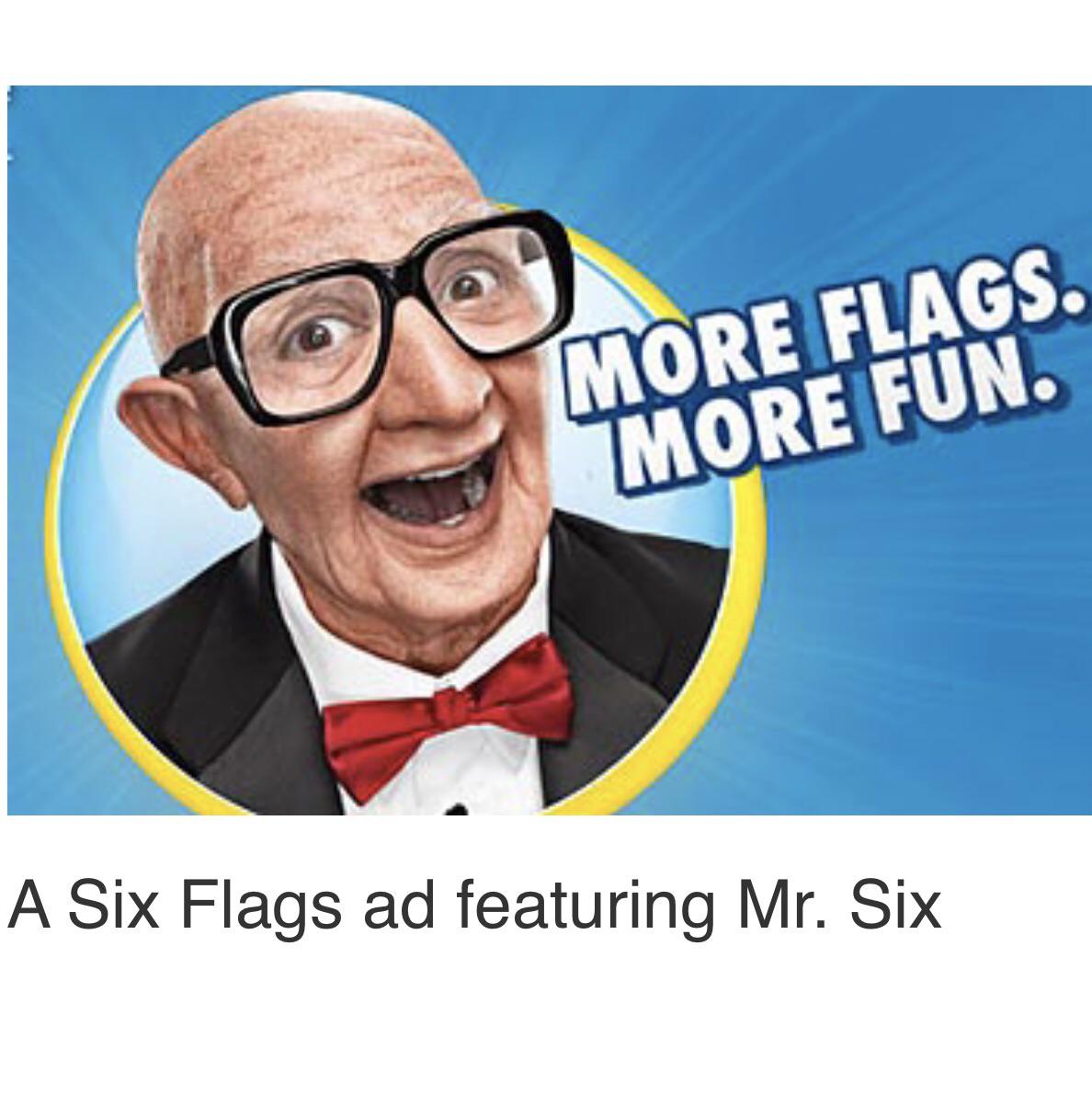
Clippit aka Clippy
Perhaps one of the most well-known examples of a retired mascot is Clippy. Clippy was the Microsoft Office Assistant launched in Windows 97. Clippy was supposed to help when people were writing. And would give you useful advice as you were working. Unfortunately, that’s not how everyone felt. Many users felt Clippy wasn’t helpful and just stared at them from a corner of the screen. So Microsoft took into account the strong negative response from users, and retired Clippy.
Mucinex’s Mr. Mucus
Humanizing objects your brand targets would be a great idea. But humanizing something grotesque could actually harm your marketing. The slimy looking mascot of Mucinex, the brand that brings decongestant medicines, is the perfect example of mascot design that didn’t connect with customers. And more than that it was strongly disliked by customers.
The London 2012 Olympic Games mascots
These mascots are not human, animal, objects and certainly have no clear personality. They were named Wenlock and Mandeville and were modeled after the steel droplets that fell from the stadium. People did not find them memorable and many said they felt like the mascots looked more like TV show rejects. The bottom line – clarity and the ability to relate to mascots is not an option. It is mandatory.
Ready to create your own brand mascot?
Aim at telling a good story and your mascot is more likely to succeed. Have fun with the process and try reaching out to your customers and target audience to see what they think, before you get too invested.
You can ask your designer to mock up some ideas and use social media to get the pulse of your followers. You can also try incorporating a brand mascot into some of your creatives or social media posts to see how they do. The point here is that you can go slow and steady, as you gather all the data you need to figure out what the right brand mascot is for you. And once you land on the right one, you’ll be able to amplify your brand in some very impactful ways.
Need some help designing your brand’s mascot? With a Kimp Graphics subscription you get unlimited custom illustrations and graphic design services for a flat monthly fee!

